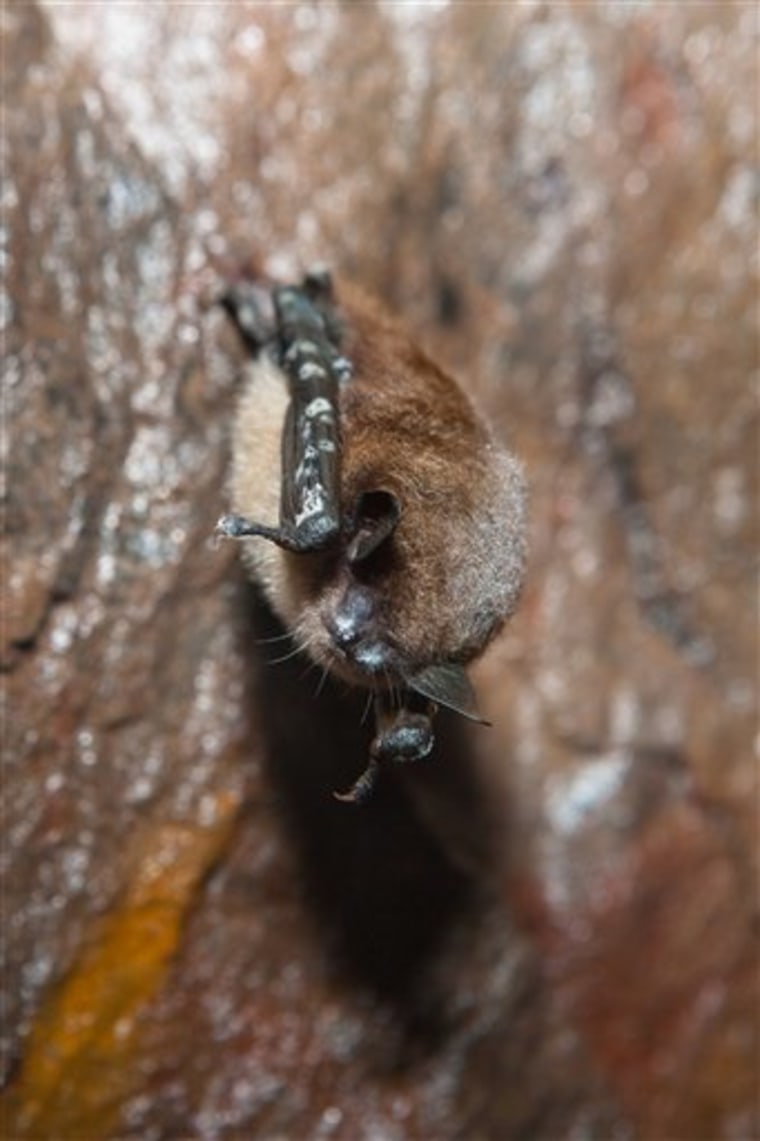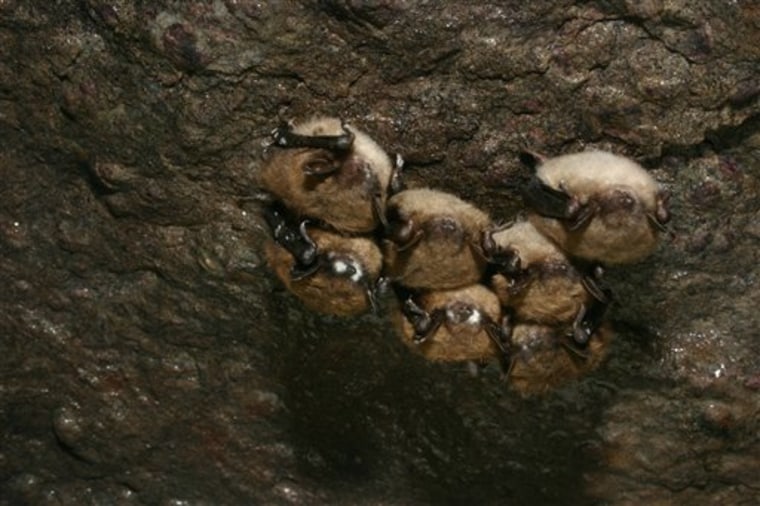One of the most common bat species could face extinction in the Northeast of the U.S. within decades due to white-nose syndrome, a disease now rapidly spreading.
While bats may have a bad reputation, frightening many people, they are vital in controlling insects that not only annoy but also spread disease to people and animals.
The threatened little brown bat has been known to eat its weight in insects in a night.
Yet researchers led by biology professor Thomas H. Kunz of Boston University report in Friday's edition of the journal Science that white-nose syndrome, caused by a fungus, could all but wipe out the little brown bat in the Northeast in 20 years.
The syndrome was first discovered in upstate New York in 2006, and since then bats have declined from 30 percent to 99 percent in various areas. The illness has been confirmed in 115 bat hibernating locations in Canada and the U.S., ranging as far south as Tennessee and west to Oklahoma, the researchers reported.
Last month the U.S. Forest Service said it is barring entry to caves on service-owned land in Colorado, Wyoming, Nebraska, Kansas and South Dakota to help prevent people from inadvertently spreading the disease there.
And the New Mexico-based Center for Biological Diversity has asked state wildlife officials across the U.S. to consider closing state-owned caves to the public to prevent the spread of the illness.

"This is one of the worst wildlife crises we've faced in North America," said co-author Winifred F. Frick. "The severity of the mortality and the rapidity of the spread of this disease make it very challenging and distressing."
The fungus grows on the nose, wing membranes and ears of bats while they hibernate in caves and mines during the winter. The researchers said this causes the bats to wake up frequently, burning up vital fat stores, with the result that they starve to death before spring.
